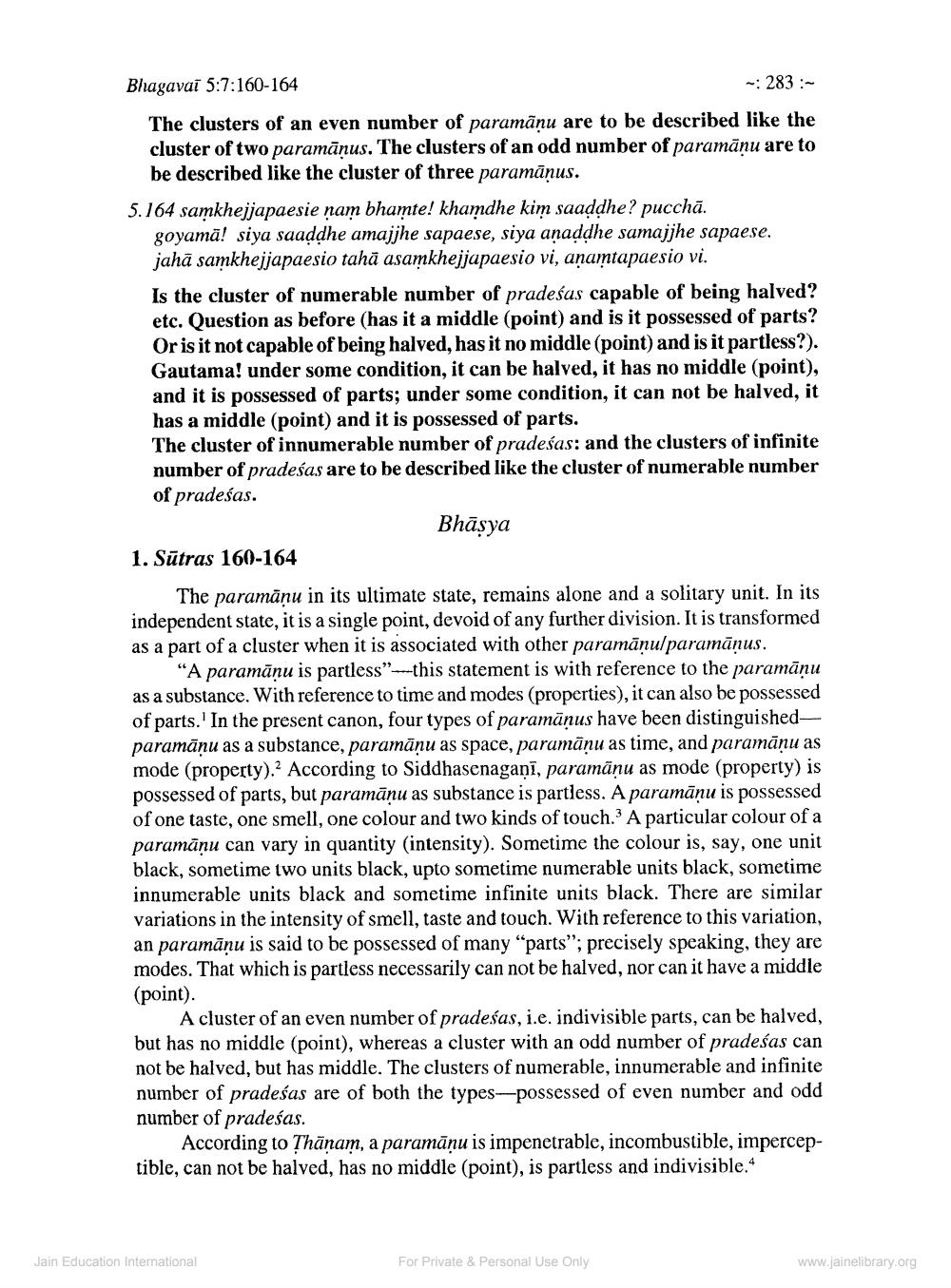________________
Bhagavat 5:7:160-164
~: 283:~
The clusters of an even number of paramāņu are to be described like the cluster of two paramaņus. The clusters of an odd number of paramāņu are to be described like the cluster of three paramāņus.
5.164 samkhejjapaesie nam bhamte! khamdhe kim saaddhe? puccha. goyama! siya saaddhe amajjhe sapaese, siya aṇaddhe samajjhe sapaese. jahā samkhejjapaesio taha asamkhejjapaesio vi, anamtapaesio vi.
Is the cluster of numerable number of pradeśas capable of being halved? etc. Question as before (has it a middle (point) and is it possessed of parts? Or is it not capable of being halved, has it no middle (point) and is it partless?). Gautama! under some condition, it can be halved, it has no middle (point), and it is possessed of parts; under some condition, it can not be halved, it has a middle (point) and it is possessed of parts.
The cluster of innumerable number of pradesas: and the clusters of infinite number of pradešas are to be described like the cluster of numerable number of pradesas.
Bhāṣya
1. Sutras 160-164
The paramaņu in its ultimate state, remains alone and a solitary unit. In its independent state, it is a single point, devoid of any further division. It is transformed as a part of a cluster when it is associated with other paramāṇul paramāņus.
"A paramanu is partless"this statement is with reference to the paramāņu as a substance. With reference to time and modes (properties), it can also be possessed of parts.' In the present canon, four types of paramāņus have been distinguishedparamāņu as a substance, paramāņu as space, paramāņu as time, and paramāņu as mode (property). According to Siddhasenagaṇī, paramāņu as mode (property) is possessed of parts, but paramāņu as substance is partless. A paramanu is possessed of one taste, one smell, one colour and two kinds of touch." A particular colour of a paramāņu can vary in quantity (intensity). Sometime the colour is, say, one unit black, sometime two units black, upto sometime numerable units black, sometime innumerable units black and sometime infinite units black. There are similar variations in the intensity of smell, taste and touch. With reference to this variation, an paramāņu is said to be possessed of many "parts"; precisely speaking, they are modes. That which is partless necessarily can not be halved, nor can it have a middle (point).
A cluster of an even number of pradeśas, i.e. indivisible parts, can be halved, but has no middle (point), whereas a cluster with an odd number of pradesas can not be halved, but has middle. The clusters of numerable, innumerable and infinite number of pradešas are of both the types-possessed of even number and odd number of pradeśas.
According to Thaṇam, a paramāņu is impenetrable, incombustible, imperceptible, can not be halved, has no middle (point), is partless and indivisible."
Jain Education International
For Private & Personal Use Only
www.jainelibrary.org




